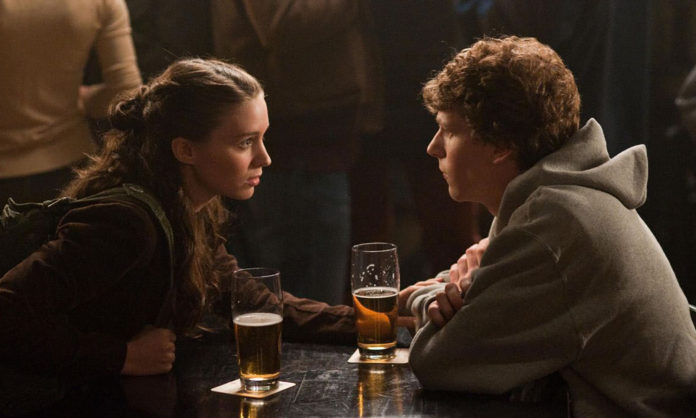An article on Industrial Scripts says the opening scene of The Social Network has important lessons for how to begin your story. “It’s one of the most compelling examples of an opening scene in its use of quick dialogue, acute character set-up and rich conflict,” the article states. Here’s why:
- Opening Strong. In the very first line of dialogue, Mark (Jesse Eisenberg) talks about the challenge of standing out from a crowd of geniuses, highlighting the movie’s underlying theme of competitiveness. “This is Mark’s preoccupation and one that will define his character arc within the film,” the article says.
- Characterization. Mark’s solution for standing out involves joining an elite group within Harvard, a competitive and hierarchical world. When his girlfriend asks which club would be easiest to join, Mark is offended, believing that she means that the easiest is the only one that would accept him. This small piece of dialogue shifts the mood of the scene and showcases Mark’s insecurities at multiple levels. He has a strong, competitive ego, but also an inferiority complex. This brief interaction with his girlfriend foreshadows the conflict Mark will experience throughout the film.
- The Motivation. The opening scene also gives Mark a piece of dialogue that lays out the entire premise of the film: “I’m saying I need to do something substantial in order to get the attention of the clubs…Because they’re exclusive. And fun and they lead to a better life.” It’s not enough for Mark to accomplish something important or join a group of his peers. He needs to join the right club because it’s exclusive. The allure of exclusivity extends to Facebook, which initially is open only to a select audience. “Right from the start, ideas about status, competition, hierarchy and exclusivity are baked in,” the articles says.
- Dialogue and Tone. “The dialogue is quick, exchanged as a battle between the two characters,” the article says. “And this sets up the film’s upcoming tone brilliantly.” The whole film is peppered with Aaron Sorkin’s trademark face-paced dialogue and the opening scene prepares the audience for its rhythm.
- Erica – The Anti Mark. The scene contrasts Mark with his girlfriend, Erica, who doesn’t share his obsession with status. Mark frequently interrupts or talks over Erica, ignoring her half of the conversation while he jumps to something that interests him. This foreshadows the patriarchal world the audience is about to enter and shows Mark missing indications that Erica is about to dump him.
- A Fuse is Lit. The opening scene also jumpstarts the story by giving Mark a clear, emotional motivation. It also sets out Mark’s defining internal challenge. When Erica dumps she, she predicts his success, but warns that people won’t like him because he’s an asshole. Before this, Mark has clearly projected himself as a good guy, but one who is not popular because he’s smart and nerdy. Erica deflates that opinion, adding insult to the injury of dumping him.
In real life, it’s questionable whether this break-up scene ever happened. Mark Zuckerberg says it didn’t and that the end of his relationship had nothing to do with the creation of Facebook. “However, in a way, this highlights the power of the opening scene more than anything else,” the article concludes. “In this context, the opening scene brilliantly portrays an otherwise impenetrable character as vulnerable and unguarded, revealing their insecurities and flaws. In trying to make up for these foibles, the protagonist and the story finds its drive. Ultimately, there’s little better purpose for an opening scene to have.”












